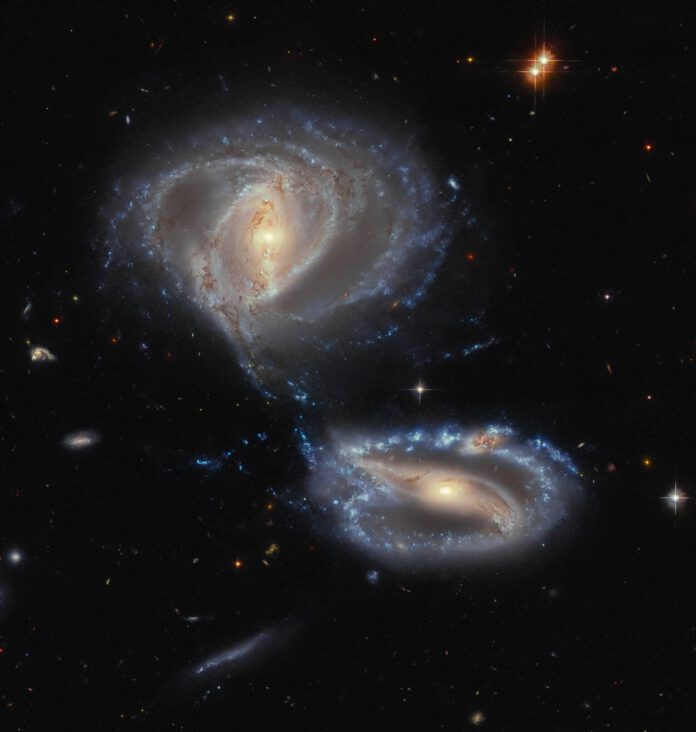
The remarkable sight of two spiral galaxies reaching for each other with their arms is evident in the space image of the week. Those with observant eyes might even spot a third galaxy hiding in the background.
Identifying the Celestial Figures
The two larger galaxies are NGC 7733 (positioned in the lower right) and NGC 7734 (located in the upper left). These spiral galaxies are an impressive 500 million light-years away from Earth and together form Arp-Madore 2339-661. Nestled just above the top spiral arm of NGC 7722 is the third smaller galaxy— NGC 7733N, which grabs attention with its orange-red gas clouds.
Moving Stars and Galaxies
The galaxies exert gravitational influence on one another. This interaction is evident in the expanse between the two systems where their arms appear to converge. Here, star-forming regions and gas clouds undergo compression and deformation. It is forecasted that in the future, the pair (or rather, the trio) will coalesce. However, this merger process will take many millions of years to come to fruition.
Type of Galaxies
Both NGC 7733 and NGC 7734 have central bars and are therefore referred to as barred spiral galaxies. The spiral arms of these types of galaxies, much like our own Milky Way, do not originate from the center but instead protrude from this central bar. Despite these similarities, the two galaxies do differ. NGC 7734 exhibits a rounder appearance and its arms form two thin rings. Meanwhile, NGC 7733 displays a flatter structure and its arms together form a single outer ring.
The Hubble Telescope’s Findings
The captivating image was captured by the Hubble telescope and offers so much more than just the aforementioned galaxies. In the distance, dozens of other galaxies that are even more remote than the initial trio can be glimpsed.











